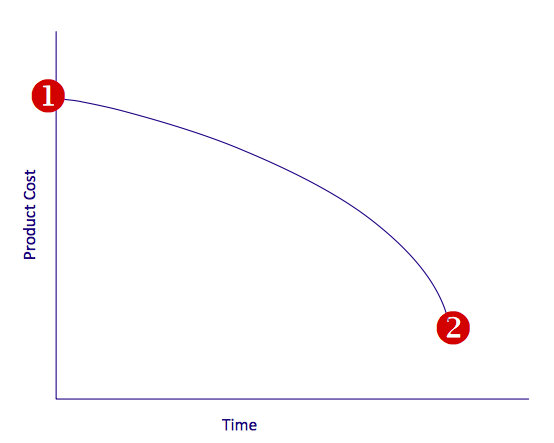Amgen Three-Deep With Suppliers; Lilly "Making Medicine Together"
By Louis Garguilo, Chief Editor, Outsourced Pharma

Bill Rich, VP, External Supply, Amgen, says he’s duty-bound to monitor the supply chain down to “our suppliers’ suppliers’ suppliers.” Obtaining this three-deep insight is accomplished by an updated supply-chain management program, and a reinvigorated supplier-relationship strategy. “I look at it as me and my suppliers are running the same company,” says Rich.
On the surface, there might not appear to be much news here; similar sentiments have been expressed before. What might be news, though, is this time Pharma is more than serious about ringing in a new era to set right supply chains that have become unreliable, at times adding to drug shortages, and drawing regulatory – and even public – scrutiny.
Rich made his comments at DCAT, held recently at the Waldorf Astoria in Manhattan. He wasn’t alone. Representatives from Roche Pharma, GSK, and Eli Lilly were also preaching from the same gospel of a higher calling for Pharma-supplier relationships … on behalf of patients ultimately.
In fact, at one point during the morning’s session on “Value Creation Through Strategic and Collaborative Sourcing,” I jotted this down: “Two full presentations in a row by Big Pharma procurement execs and not a word about cost reductions … all relationships and patients.”
Some of this oratory is to be expected before an audience of CMOs/CDMOs and suppliers. Yet, could it be we’ve reached the end of an era of raw procurement power focused intently on provider costs? Interestingly, if so, it comes at a time when the rest of the healthcare industry is in elevated – and public – debates over pricing, particularly for new drugs. Is the external drug supply-chain now more about relationships than the lowest cost of goods and services?
Suppliers beaten up by Pharma’s procurement departments over the years might not be holding their breath. However, Pharma speaker after speaker at DCAT practically pled with the suppliers to listen to their message. If this attitudinal change is real, it’s importance now is magnified. That’s because the change is based on the recognition that a procurement function overly focused on price may have saved Pharma money in one ledger, but cost it more in terms of reliability, quality and supply-chain sustainability in another.
Serious (This Time) About Relationships
Rich believes the Pharma industry – and all that supply it – has “a sacred trust to society” to ensure quality and reliability. He mentions a recent manufacturing issue with particulates in API, within accepted levels but still concerning, which were traced to that third level of supplier mentioned above. The investigation, he says, included a level of supply-chain cooperation rarely if ever demonstrated in the past.
Amgen has developed an outward-facing “Supplier Relationship Excellence” (SRE) program for strategic partners, and an internal “Supplier Focused Framework,” both designed to improve quality, increase reliability, and decrease variability of goods.
The very purpose of creating an external supply chain, he says, “is to advance reliability for all materials, medical devices and the CMOs involved.” He listed these objectives for the two initiatives: drive strategies for specific business needs, and provide prioritization; unify supplier management and direction; develop an integrated approach to risk, and provide oversight of all suppliers; increase Amgen’s and its suppliers’ knowledge-management capability and expertise.
Quite a list. Conspicuous by absence is direct mention of reducing costs of goods and services. On the other hand, what is being mentioned more are patients: The industry wants its suppliers focused on the “end-users.” Rich’s presentation at DCAT was titled, “Partnering with Suppliers … To Serve Patients.” I heard this same point in a recent discussion with Shire’s David Lowndes, SVP of Supply Chain Management. He explained, “We've actually taken patients to our CMOs to share our motivation with all their employees.”
Back at that DCAT session on the supply chain, Craig Michael, Director - External API Manufacturing, Eli Lilly and Company, titled his presentation, “Making Medicine, Together.” Michael did specifically lay out a main goal of price reduction, but also said this: “We [Pharma] make medicines, but you [CMOs] also make medicines. Is that how you would describe your business? The whole chain needs to say, believe and act as ‘I make medicine.’”

Just to add a dose of perspective to all this, we’ll note that Michael of Lilly also spoke about the nearby chart, itself elegant in it’s simplicity. He describes the chart as, “What value might look like.” As you can see, the goal is for long-term reduction in cost of goods. How Pharma and suppliers get to that cost reduction is the key. The strong consensus now is it does so inherently through a supply chain based on the advantages of strategic partnerships, rather than on a more transactional path of lowest price from project to project.
Suppliers should listen up.
